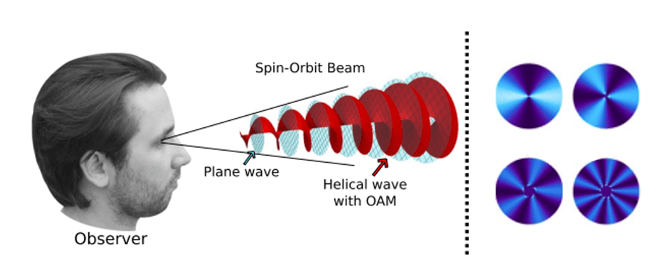Summary
Magnetoelectric multiferroics are materials that exhibit correlated ferroelectric and ferromagnetic properties (i.e., a magnetoelectric effect). The resulting ability of these materials to simultaneously store data in electric polarization and magnetic moment could increase data storage density and data processing speed while reducing energy consumption. This project aims to design and fabricate new composite multiferroic nanostructures with enhanced interactions between the electric polarization and spin by coupling ferroelectric and ferromagnetic components (preliminary examples of such nanostructures can be seen in the figure). First, ferromagnetic components with variable compositions and ferroelectric components with different nanostructure sizes and morphologies will be synthesized and characterized. The optimized ferroelectric and ferromagnetic components will be coupled to form the composite multiferroics, which will be probed at ensemble and single nanostructure levels to investigate the magneto-electrical properties. Additional tests will be run to optimize the fabrication method and to propose improved materials, configurations, and compositions for multiferroics systems that demonstrate enhanced magnetoelectric coupling in quantum communication applications. The results of this work can inform future designs of multifunctional nanomaterials for improved information processing and memory storage technologies.

(a) Magnetic hysteresis loops of multiferroic nanocomposite at 5 K and 300 K. Inset: Transmission electron microscopy (TEM) image of ferromagnetic cobalt ferrite nanocubes used to prepare the composite. (b) TEM image of composite core-shell multiferroic nanowire and the corresponding elemental line scan. (c) High resolution TEM image of an interface between ferroelectric and ferromagnetic components.(What is CFO and PTO?)
Related Content

Structured Light Applications in Vision Science
Eye diseases such as macular degeneration can have a devastating impact on quality of life. Early detection and treatment are thus crucial for preventing irreversible vision loss. A previous study found that the human eye can detect differences in ‘structured’ light beams. Such light beams are composed of a coherent superposition of differently polarized planar […]
April 24, 2023

Carbon Nanotube Monolayer Josephson Junction Superconducting Qubit
Carbon nanotubes (CNTs) are a promising material for use in Josephson-Junctions (JJs) given their unique properties, such as high electrical conductivity, pristine surface, inherent nanoscale dimension, and silicon-compatible processing
June 1, 2017

Micro-Supercapacitors Based on Termination Optimized MXene Quantum Dots with Ultra-High Rate Capability and Fast Frequency Response
Micro-supercapacitors (MCs) are miniaturized energy storage devices that can enhance the performance of wearable health devices, medical implants, wireless sensors, and micro-electromechanical systems due to their fast frequency response, long life cycle, and vast temperature operation. However, to make these MC systems into commercially feasible products, necessary improvements to current MC performance are necessary, primarily […]
June 12, 2023


